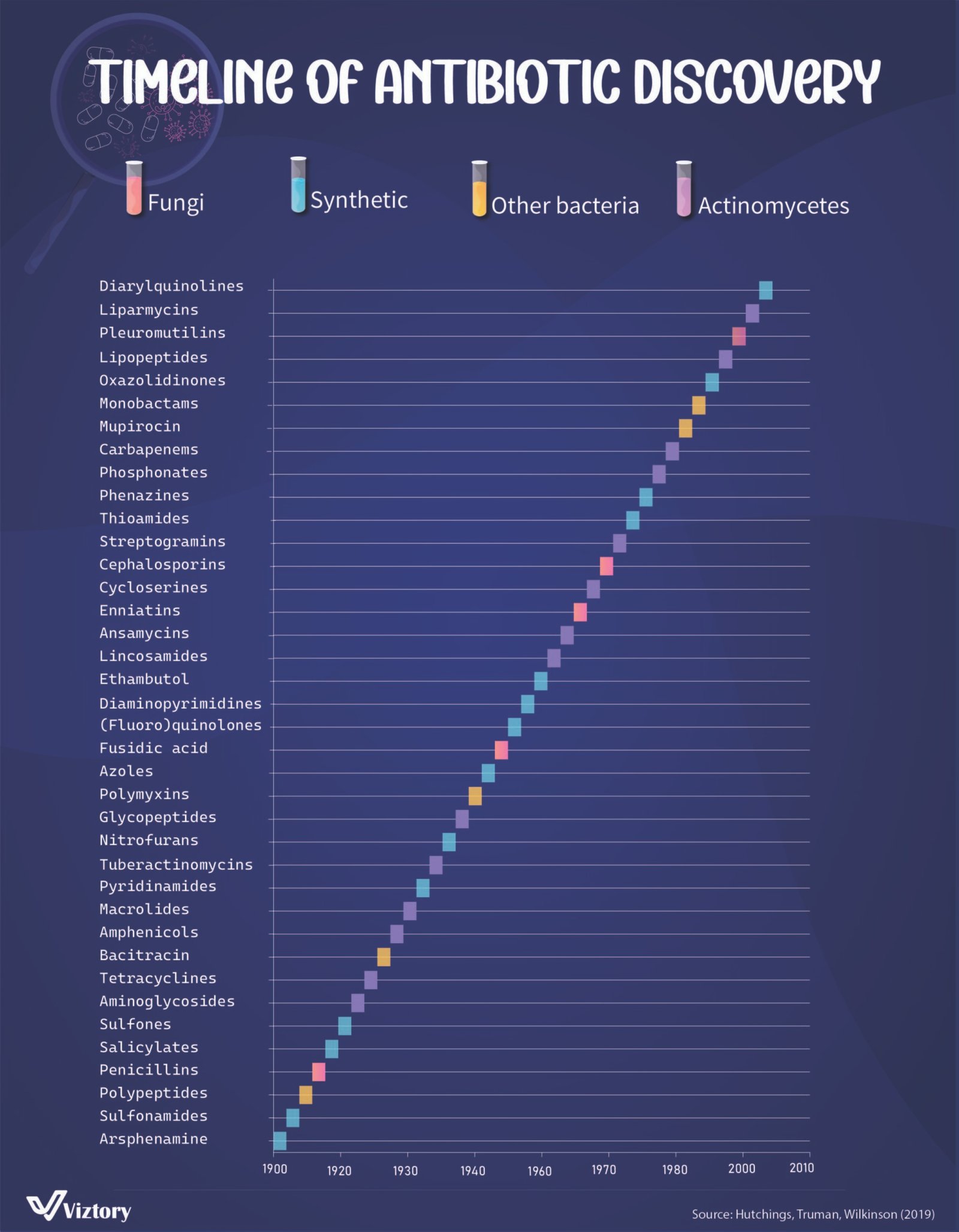Timeline of Antibiotic Discovery
-
Apr, Fri, 2025
Introduction: A Medical Revolution in the Making
Antibiotics have transformed modern healthcare. From deadly infections to routine medical procedures, these drugs have enabled a new era in medicine. The infographic titled “Timeline of Antibiotic Discovery” visually represents the chronological development of antibiotics from the early 1900s to recent decades. Each colored bar highlights the source of the discovery—whether from fungi, synthetic chemistry, actinomycetes, or other bacteria—offering both a scientific and historical overview of innovation in health sciences.
Natural Origins and Early Impact
The early 20th century saw the discovery of some of the most groundbreaking antibiotics. Arsphenamine, Sulfonamides, and Penicillins set the stage for a new medical frontier. Penicillin, discovered from fungi, became the poster child for early antibiotic success, significantly reducing mortality rates during World War II and shaping global health policies. These natural-origin antibiotics were not just medical tools—they were milestones in public health and clinical care.
The Rise of Synthetics: Human-Made Solutions
As resistance began to emerge and natural sources reached their limits, scientists turned to synthetic approaches. This led to the introduction of Sulfones, Fluoroquinolones, and Diaminopyrimidines. These lab-created antibiotics offered versatility and scalability, crucial for treating a wider range of infections. From a healthcare perspective, this shift allowed for more targeted drug development, improving patient outcomes and minimizing treatment failures.
Microbial Allies: Actinomycetes and Other Bacteria
Actinomycetes, a group of soil-dwelling bacteria, became the next frontier in antibiotic research. They contributed significantly to the discovery of Tetracyclines, Aminoglycosides, and Macrolides—some of the most widely used antibiotics to this day. These discoveries showcased how nature itself provided tools for humans to combat microscopic threats, reinforcing the importance of microbiology in medicine. Other bacteria also played their part, especially in the production of Polymyxins and Fusidic acid, further diversifying the pharmacological arsenal.
Reflections from the Timeline
One striking pattern in the infographic is the concentrated burst of discoveries between 1940 and 1970, often referred to as the golden age of antibiotics. This period correlates with intensified global health needs during and after World War II, and massive investments in pharmaceutical research. Since then, discovery has slowed, highlighting a growing concern in healthcare: the need for new antibiotics in the face of rising antimicrobial resistance. The infographic doesn’t just tell a story of medical progress—it signals a warning about complacency.
Conclusion: Beyond the Graphic
The Timeline of Antibiotic Discovery is more than a historical chart; it is a visual testimony to how science and medicine have evolved together. Each bar on the chart represents not just a chemical breakthrough, but a life saved, a surgery made possible, or an infection treated. As we move into an era where antibiotic resistance threatens decades of progress, the healthcare industry must take inspiration from this timeline to fuel innovation once again. The next chapter in this timeline depends on today’s actions—sustainable antibiotic use, continued research, and global cooperation.

